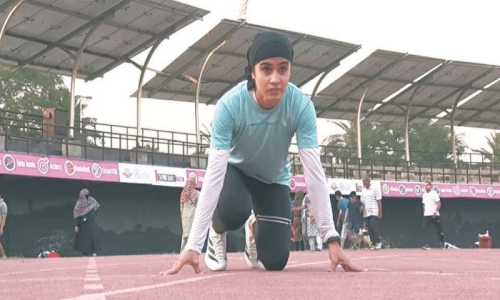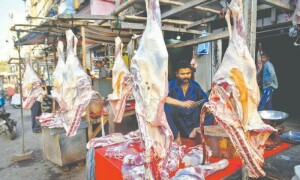ISLAMABAD: The government of Punjab has formed a committee to investigate the causes of low cotton production this year.
The committee, which has already met once, evaluated the cotton crop situation and found that there was a declining trend in the production and yield during 2015 compared to the previous years.
While the committee believed that weather remained hostile such as heavier rains and extreme heat, agriculture experts pointed towards a new growing threat to Pakistan’s strategic crop.
Experts say Pink Bollworm has developed resistance to genetically modified (GM) cotton variety and damaging crops
“The Pink Bollworm has developed resistance to the genetically modified (GM) cotton variety and damaged crops this year,” said an expert at the Pakistan Agriculture Research Council (PARC).
The government replaced the indigenous cotton crop with imported genetically engineered cotton seed in 2005-06 to control pests particularly the Pink Bollworm.
More than 80 per cent of all cotton sown in Pakistan today is Bt or GM cotton. Insecticides gene, CRY 1Ac, are inserted into the cotton seed that kills pests such as Pink Bollworm and other bollworms.
However, in November 2014, government officials conceded that Pink Bollworm had developed resistance against the first generation of Bt cotton (Bolgard I) in an unexpectedly short time of three to four years. One of the reasons that bollworms developed resistance to the genetically modified cotton crop was the low level of toxins in the crop.
In a letter, Dr Abid Mahmood, the director general (agriculture) Ayub Agriculture Research Institute, Faisalabad, recommended to the government to sow the 2nd generation of GM cotton seed (Bollgard II) which was high in the toxin level to deal with the invasion of Pink Bollworm.
However, the crop destroying pest has also developed resistance against the 2nd generation Bt cotton (Bollgard II). In its 2014 report, the International Cotton Advisory Committee (ICAC), which assists governments in fostering a healthy world cotton economy, stated that Pakistan had switched from the low toxin Bollgard I to a more poisonous Bollgard II which now made up for 86 per cent of all cotton sown in the country.
According to experts at the PARC, Pakistan is not the only example where Pink Bollworms have wreaked havoc. In India, over 80 per cent of the Bt cotton (Bollgard II) crop in the Raichur district, cultivated both in rain-fed and irrigated areas, has been destroyed in a pink bollworm attack, resulting in a loss of over Rs300 million.
“Pink bollworms and whitefly infestations have ruined Bt cotton production this year which is expected to be about 10 million bales as the lowest cotton yield and production in last 15 years. Historically, whenever cotton production declined in the past it resulted in an adverse effect on Pakistan annual growth (GDP),” said the PARC expert.
Director General Agriculture Extension and Adaptive Research, Punjab, Dr Mohammad Anjum Ali explained how hostile weather conditions due to climate change created conducive environment for Pink Bollworm to grow and spread.
“Bt is not a complete solution to eradicating Pink Bollworm. However, alerts had been issued last year after this pest was found prevalent in Bahawalpur and its spread was feared,” said Dr Ali.
The expert, who is in favour of new technologies, argued that the quality of Bt cotton seed in Pakistan was compromised and unregulated.
“The Bt cotton seed is a pirated version and low in toxin, which is why it is not surprising that Pink Bollworm has developed resistance.”
As Bt has been terribly beaten by extreme weather conditions both in India and Pakistan, the official believed that genetically engineered crop must be sowed carefully.
“If Pink Bollworm has developed resistance against the new technology, cotton growers must be advised to treat Bt as non-Bt and use pesticides to eradicate the pest,” said the official.
However, agriculture scientists at PARC argued that necessitating the use of pesticides at similar levels to non-Bt cotton would defeat the purpose of sowing GM cotton seed and result in less profit for farmers because of the extra expenses.
Published in Dawn, December 28th, 2015












































